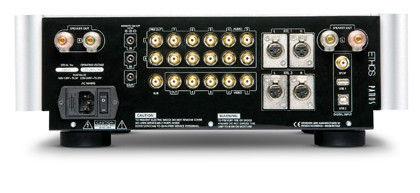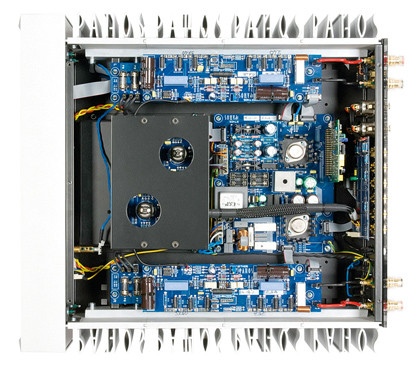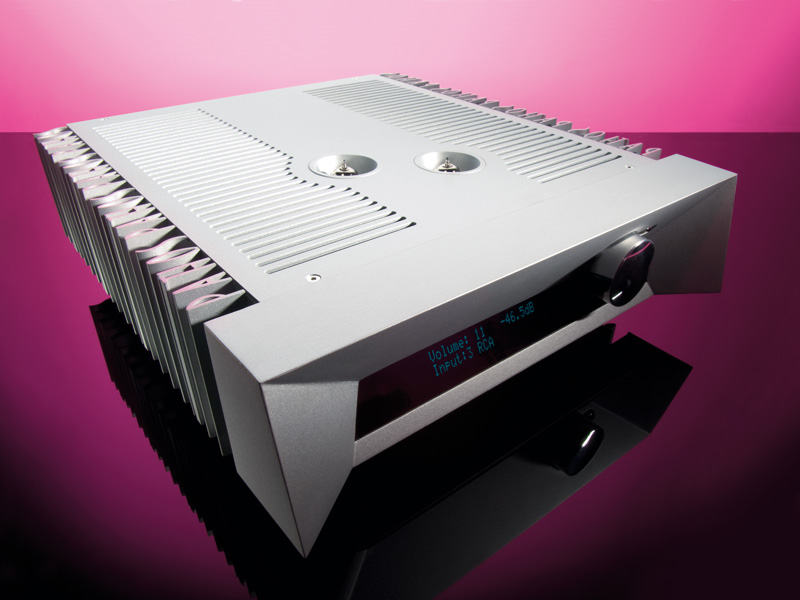TechRadar Verdict
Pros
- +
Big dynamic sound
- +
Balanced input options
- +
DAC/USB option
Cons
- -
No labelling on the remote handset
Why you can trust TechRadar
The increased use of music sources other than CD has led to the need for hi-fi components with a broader range of options. In particular, the ability to accept digital source material stored on computer hard drives has become an added factor.
With the Ethos, Pathos has created a powerful hybrid tube/transistor integrated amplifier capable of accepting a wide range of sources – from balanced analogue via XLR, to digital via USB (via an optional DAC).
Here's an amplifier that meets the needs of two-channel purists, while catering for those interested in using digital sources.
Five alive
The Ethos makes provision for five unbalanced line sources via RCA phono plugs, two balanced line sources via XLR plugs, plus four video inputs. There's an optional built-in 24-bit/192kHz digital-to-analogue convertor, with inputs via two USB ports type A and B, and a S/PDIF co-axial RCA socket. A stereo pre-out and mono subwoofer output, are also provided.

The preamp section is entirely tube; pure Class A and based around a pair or ECC88s (6922) valves, one each per channel. The power-amp section is a true dual-mono solid-state design that delivers around 100 watts per channel into eight ohms – or 200 watts into four ohms. It's also possible to bridge the output, creating a single-channel output of 270 watts.
All circuits are feedback-less. The electronic volume control has 180 steps with digital readout and is entirely resistive – using laser-trimmed resistors for accurate channel balance and precise adjustment. Each volume 'step' is around 0.5dB, allowing specific repeatable control of loudness.
An alpha-numeric fluorescent display indicates things like volume setting (in dB values), and input selected.
Specifications are impressive, with a claimed frequency response from 2Hz to 200kHz (+/- 0.5dB) and less than 0.01 per cent distortion. Each tube sits in its own little well and would be easily removable should the need for replacement arise. The tubes produced some heat but not that much – even though surrounded by casework, the tubes seem to run fairly cool, but during use, the casework gets mildly warm after an hour or so.
A slight mechanical transformer buzz was just audible with our review sample when sat close by, but this wasn't felt to be serious. The amp is fully protected against things like excessive temperature rise and accidental short-circuit. There's a relay-protection system that mutes the amp while everything warms up and settles down – this takes about 30 seconds.

After switch-on, the amplifier defaults to Input One (XLR) and the volume control is set at – 52dB. If you switch the amplifier off from the front panel, your previous volume and input settings are remembered. However, if you switch off from the wall socket, or disconnect the mains supply, your settings are lost.
Each input has its own individual volume control memory and can be set independently. This means you can adjust levels to cope with sources of differing sensitivities – a nice touch. There's provision to adjust left/right stereo balance, available from the remote handset via button five.
The remote allows volume control, input selection, mute, and lets you put the amp into Standby. It has six press buttons, but these are not labelled. This means you have to remember what each one does – a free memory test with each amplifier!
Massive beast
Weighing in at a hefty 20 kilograms, the Ethos is a massive beast. Just lifting it tells you it's a well-made piece of kit.
The casework features a combination of steel top and bottom plates, with heavy cast-alloy heatsinks and front panel. It's pretty large for an integrated and quite a bit deeper than usual. The heatsinks are extruded in the shape of the Pathos brand name logo when viewed from above.
The two valves each have their own little 'well' for protection, but the glass apex of the tube sits slightly proud of the top-plate – so take care not to place anything over them for fear of breaking the tubes. Although the amp doesn't get massively hot, you need to keep the ventilation slots clear.
The casework is very well finished and solidly built – oozing quality and class from every pore. The styling is a matter of taste; we love it. For sure, it's a big, uncompromising unit and not everyone will like the way it looks (the price is also fairly high for an integrated). However, given the features and facilities offered (balanced inputs, optional built-in DAC and USB inputs) you undoubtedly get a lot for your outlay.
This is a highly versatile unit that should be pretty future-proof. So it's a good investment for reasons other than sonic ones.
Immensely impressive
Straight from the box, the unit needs time to burn in. Initially, it sounds rather bright and forward. But after a week or so it settles down nicely, producing a winning combination of immediacy and clarity.
While it hasn't the smooth creamy richness you get with the best all-tube amps, the Ethos does have a certain tonal allure. It's very lucid and detailed, but not excessively 'toppy' or over-bright. The sound has excellent focus, lots of fine detail and there's plenty of power. The bottom end is taut and powerful, with better control than most transformer-coupled tube amps.
The Ethos features a MOSFET power amp and being direct-coupled (rather than transformer coupled like an all-tube amp), there's an immediacy that is immensely impressive. Transient attack is very good, and wide dynamic swings are handled with aplomb – the sound expands impressively, with no hint of compression.
The use of tubes in the preamp probably adds a degree of richness and warmth, but the Ethos is not obviously rose-tinted or soft. Listening blind, we're not sure you'd automatically register the use of tubes.
We initially used our review unit via its unbalanced inputs and sonically the results were extremely good. However, we later tried the balanced option and noticed a very worthwhile improvement in tonal depth and richness, plus a heightened sense of scale and dynamics. The sound seemed bigger and more dimensional. It was louder, too – by about 6dB.
However, even after adjusting volume levels to compensate, the unbalanced option never seems to match the extra 'something' we noticed with balanced. To exploit the balanced option, you'll need a CD player with balanced outputs, plus a set of balanced cables with XLR plugs at each end. These will obviously add to the cost, but we think you'll find the difference well worth it.
Mix of virtues
The Ethos is a sophisticated highly accomplished stereo integrated amplifier that is good enough sonically to appeal to discerning purist two-channel audiophiles, while offering lots of 'extras' to interest those looking for something more versatile. It's very well made and offers a lot for the money.
It delivers the kind of smooth refinement you expect from a good valve amplifier, but has the extra power, drive and control you get from solid-state. Given such a mix of virtues, it should enjoy a wide appeal.
Follow TechRadar Reviews on Twitter: http://twitter.com/techradarreview
